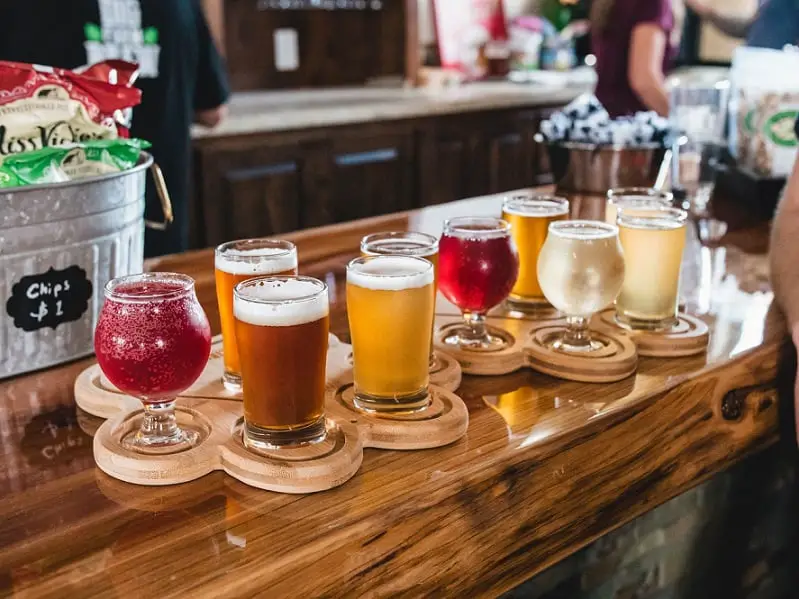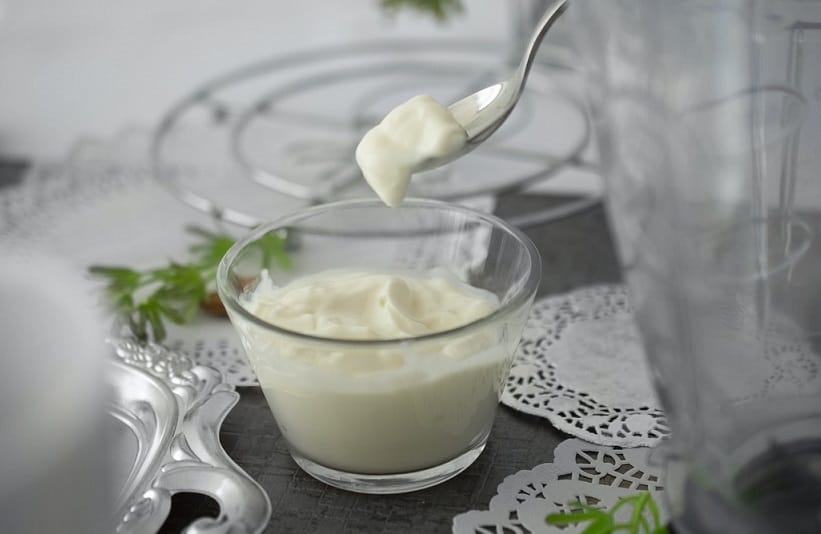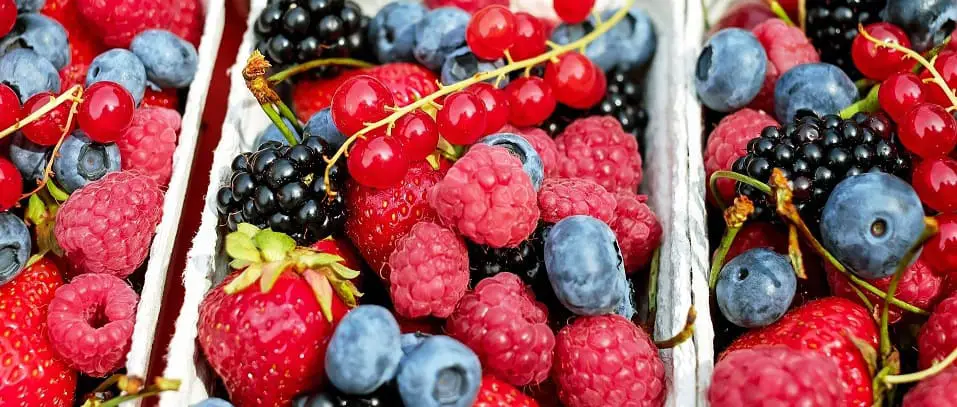
Known for their bright colors and funky flavors, there are a ton of micro breweries specializing in sour beers. But I’ve always thought that sour beers took forever to make, like month’s or even years!
The best way to brew a sour beer may be the fastest. Kettle Souring is an easy way to get a sour beer quickly. Other methods of souring take much longer but produce a sour beer with more dimension. Sour purists stand by sour aging as the definitive way to brew a high quality sour beer.
If you are a beginner at brewing a sour beer I would suggest kettle souring first, since it will give you the quickest feedback on success or failure.
However, there are many other ways to produce a sour beer.
Different Ways to Make Sour Beer
Just like there are a ton of different styles of sour beer there are also a lot of different ways to make a sour beer.
Some popular ways to make a sour beer are:
- Kettle souring the fastest and easiest.
- Mash souring harder and less reliable.
- Secondary barrel age souring and mixing.
- Primary fermentation souring.
When attempting any of these methods of producing a sour beer its also very important to make sure that you have a secondary set of gear. However, kettle souring doesn’t touch cold side equipment so its the safest.
You may want to pop over to the recommended gear section to take a look at some other gear setups you might wanna try.
The problem with making sour beer is the bacteria is difficult to kill. While it is possible that you can kill the bacteria with sanitizer and hot water, it will not always work and you run the chance of ruining non-sour beers in the future.
Kettle Souring the Fastest and Easiest Method
When it comes to souring if you are a home brewer this is probably the method that you want to use. You can utilize this method from both all-grain and extract brewing methods.
You will likely need two sets of equipment since sour beer flavors can sneak into any of the clean beers you brew. Kettle souring is probably less dangerous since you kill the bacteria at the boil.
Process for Kettle Souring
In order to produce a kettle sour you will need to brew your beer as you normally would except with the extra step of pitching a souring bacteria having it sit at a temperature range between 90-95F for 2-3 days.
There are a few suggestions when it comes to brewing a kettle sour.
- Get a cleaner beer by boiling your wort then pitching the souring bacteria and boiling the wort again to kill the souring bacteria after a few days.
- On the second boil is when you will be adding hops and any other ingredients.
- Alternatively you can skip the first boil, but you will have a more random funky unknown flavor from wild yeasts that may inhabit the wort.
The best part about kettle souring is instead of waiting months in primary and secondary fermentation you only have to wait a few weeks.
Yeasts Used For a Kettle Sour
There are different yeasts strains that you can use when producing a sour beer that go well with the bacteria introduced during the kettle souring process.
These yeasts are known as Saccharomyces. Brettanomyces also known as Brett is the most famous and can produce some pretty funky flavors when used with souring bacteria.
Essentially Brett works well with bacteria and feeds off the byproducts produced by the bacteria to create a pleasant flavor.

You can also play around with other Saccharomyces yeasts and even various bacteria. I’ve even seen some people pitch Greek yogurt as a souring agent.
Kettle Souring Disadvantages
When it comes to kettle souring it really produces a one dimensional flavor. You don’t get the funky or in depth flavors of aged sours.
While you might not create the best sours using this method, the beers will taste very clean and probably better to the uninitiated. It’s also a great way for homebrewers to dip their feet without wasting years on failures.
Mash Sour for better PH
When it comes to a mash sour its a little bit more difficult. You will need to pitch a sour strain into the mash. The idea behind souring a mash is to add acidity before primary fermentation.
Before you do this though its best to mash out the grain at a higher temperature to kill unwanted radicals then bring down the temperature to around 115 F.
When the temperature is around that lower temperature, you will pitch the sour strain. Make sure to purge the mash tun of any oxygen and seal it tight for the next day.
Sparge After Inspecting Mash
When you are ready to check out your mash, use a PH meter to check the acidity level, it should be in the 3.0 -3.7 range. If it smells terrible it might just be the top layer got infected, don’t freak out yet.
Just sparge as normal and if it still smells rotten then you may want to try again. Sparge souring is not for the faint of heart and I would highly suggest doing a kettle mash, since there are less possible contaminates.
A Visual of a Fast Kettle Sour
This YouTube video shows an interesting way to get try out creating a sour beer. Including adding the distinct sour fruit puree.
Secondary Fermentation Barrel Age Souring
Secondary fermentation or barrel age souring is kind of exciting. I get a bit giddy thinking about it. Really all you need to do is take a finished beer that even has already used another type of yeast and then transfer to secondary.
Once you transfer to secondary then you can add your Brett yeast alongside your bacteria of choice. You can even buy Brett mixed with bacteria to pitch.
When it comes to the style of beer that you should be using for souring there isn’t really a specific style, but wheat beers and pale beers are good candidates. Some say lagers are the best for aged souring since they are more immune to oxidation.
Oak Barrel Secondary or Not
You don’t technically need an oak barrel to have a barrel aged sour, you can just use a glass carboy and add oak chips into it to get the flavor.
The flavor can actually be more intense using the chips than just the barrel because there is more surface area.
Mixing and Blending Sours
Because traditional sour aging takes such a long time it makes sense to formulate a plan for blending.
This allows the brewer to have a variety of tastes that he can enjoy without being stuck with one flavor that took over a year to make. Its also used by many breweries to create a more consistent product.

When it comes to blending beers the processes is simple enough, you take to sour aged beers that are in a specific range of sour and tartness. If you have two on opposite ends of the spectrum you can mix them to create a more balanced sour.
You can mix as many different sours as you want, but you won’t always get a good flavor sometimes they can be really bad and its a risk you will have to take. Tasting terrible beer can be a sad truth for the beer blender.
If you are interested in learning more about beer blending check out the sourbeerblog.com. Its got a massive amount of information on beer souring and blending.
Primary Fermentation Souring
This souring method is much like kettle souring with the main difference being that the bacteria is not pasteurized after it has done its job.
Instead the bacteria gets a head start ahead of the yeast and is heated to a higher temperature where the yeast generally cannot survive. Somewhere in the 90 degree Fahrenheit range.
Homebrewers can achieve this level of warmth by using heating blankets. After the bacteria has had a chance thrive the wort is cooled and the yeast is pitched alongside the bacteria.
What is Unique in Sour Beer?
Sour beer is different from other beers because it utilizes bacteria and sour types of yeast.
If you are new to brewing sour beers its best and easiest to start with a clean Saccharomyces that you can get from any of the beer yeast producers.
Saccharomyces is essentially a family of souring yeast that is used when brewing, although there can be many versions of it. For example Brettanomyces one such variation.
When it comes to souring using lactic acid it is common to use these two bacteria.
- Pediococcus
- Lactobacillous
It’s sort of a bit confusing and I know I spent the better part of a day trying to figure it out, especially since bacteria and yeast are used interchangeably online even though that is incorrect.
Yeast is a fungi and bacteria is well, bacteria. Just remember we are using probiotic “the good kind” of bacteria.
The most interesting part of souring beer is that because there are so many kinds of bacteria and yeast combinations the flavors are essentially limitless.
If you really want to know how to use these yeasts and bacteria interchangeably together check out the home brewers association website for a really great run down.

Finding Sour Yeast and Bacteria
There are some interesting ways to find yeast and bacteria for making sour beers. The simplest and probably safest being purchasing it from any of the beer yeast makers.
For example you can find some good bacteria and yeast strains (affiliate link) from white labs on the adventures in homebrewing website.
You can also get yeast from two other methods.
- The tried and true wild yeast and bacteria from open fermentation. This is how they did it in the olden days.
- Finding a sour beer you really love and harvesting the yeast from the bottom of the bottle.
Sour beers are truly an interesting pastime for the true yeast and beer hobbiest but its currently the wild west of brewing.
The Fruited Sour

Fruit is naturally acidic so the fruit flavors will taste much more natural when adding to a sour beer.
The reason being sour beers are more acidic and matching the acidity to the fruit being used will produce a brighter flavor.
The Final Ingredient to Sour Beers
The thing about sour beers is you don’t want bitterness. The real problem here is you can’t have beer without hops. But wait, here is the trick you need to know.
Use aged hops!
When it comes to sour beers you really do need hops but for a different reason. You need the acids present in hops to lower PH and produce acidity and sourness.
Aging hops does one thing great, it lowers the levels of bitterness acidity while keeping the acidity we need for sour beers.
So the next time you have some old hops lying around think about brewing a sour beer!
Sour Beer Opens Up Tons of Possibilites
When it comes to working with sour beers there is entirely different realm of possibilities. The addition of beneficial bacteria can entirely change base recipies that you already have.
So if your are looking to expand your homebrewing knowledge brewing a sour is an excellent idea.
